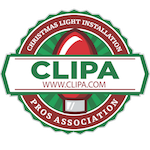Understanding the Basics of Grow Lights for Indoor Plants
There are many benefits to growing plants indoors, whether for decoration, practical use, or both. In many ways, an indoor plant, or even an entire indoor garden, can be easier to cultivate and maintain than its outdoor counterpart. However, overlooking the basics of plant biology is a surefire way to be unsuccessful at growing, no matter where you are, and one of those basics is how much light a plant should receive. After all, light is required for photosynthesis, and photosynthesis is required for plants’ survival. Here is a breakdown of what you need to know about lighting your indoor greenery.
Ideal Source of Light For Plants
The ideal source of light for nearly all plants is the sun. But when growing indoors, even a large, unblocked window will be unlikely to let enough natural light through to allow most plants to flourish, especially during the winter months. This is why many indoor growers turn to artificial light. However, not just any lighting will do because plants are full of finely tuned photoreceptors, capable only of absorbing specific wavelengths of light. A good grow light will emit a spectrum of light similar to that of the sun, or otherwise be tailored to the particular needs of a detailed growth plan for an individual plant.
Artificial Grow Lights
Even if you already know that your indoor plants will require grow lights, you may still encounter confusion when trying to differentiate between the hundreds of options that are advertised for indoor growing. Knowing the differences between fluorescent, incandescent, and HID bulbs can be useful when scanning the shelves for the right choice. No matter what kind of bulb you choose, you’ll want to remember to place your lighting as close to your plants as possible without burning any leaves.
Incandescent vs. Fluorescent Lights
Incandescent lights, cheap and abundant, can be perfect for low-maintenance houseplants but don’t put out enough light for an indoor garden. Fluorescent lights are also inexpensive and provide enough light for growing many herbs, for example, but still don’t give off enough for most budding or flowering plants. However, compact fluorescents are much more efficient than traditional fluorescent systems to be effective with many plants. High-intensity discharge (HID) lights are the brightest and most efficient lights on the market but tend to be quite expensive. There are several subcategories of HID lights available, but only metal halide and high-pressure sodium bulbs are recommended for indoor growing.
Monitoring Your Plants With Grow Lights
Once you have your plants under the right light, you’ll want to monitor them to determine whether the light is doing its job effectively. If you notice that your plant is lighter in color than you would expect, has small leaves for its size, or appears spindly, chances are it isn’t getting the amount of light it needs. On the other hand, if you notice any leaves taking on a yellowish or brownish tint or appear to have scorched areas, it would be a good idea to move your light source farther away.
Light is only one factor out of many that affect a plant’s ability to survive and thrive, but it is crucial. Don’t be afraid to take your time when deciding what kind of light and how much of it you want your plants to receive.
Are You Ready For More Lighting Tips
As you love your plants and want them to thrive beautifully, have you thought about lighting up your home or business during the holidays? If so, fantastic; if not, think about it. Bookmark the Brilliant Solution Holiday Lighting website so you can return to us when the holiday season sets in. We would love you to join our long list of 5-star review customers. And better yet, your property will look amazing and be the envy of the neighborhood.


